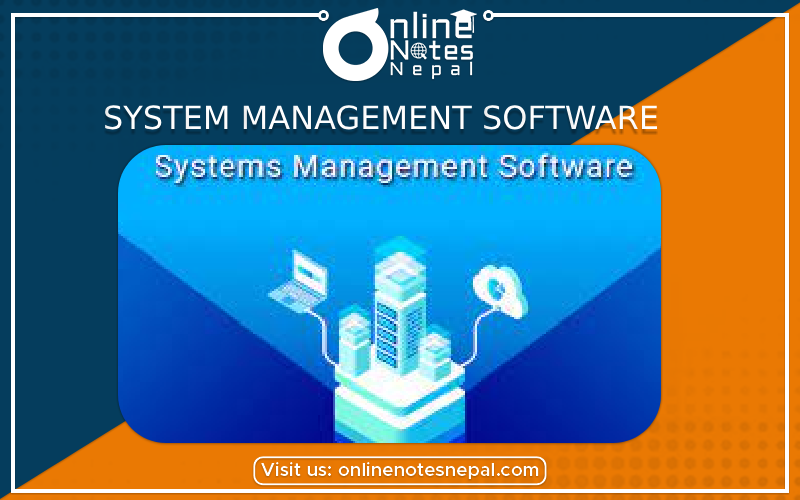Published by: Anu Poudeli
Published date: 31 Jul 2023

System Management Software, also known as System Management Tools or System Management Solutions, is a type of software that monitors, controls, and optimizes the operation of computer systems, networks, and infrastructure. These tools are crucial in current IT environments, assisting administrators and IT professionals in the efficient management and maintenance of diverse systems, applications, and resources. Here are some of the most important components and features of System Management Software:
1.Monitoring and Alerting : System Management Software continuously monitors the health, performance, and availability of hardware and software components. It gathers information about system characteristics such as CPU usage, memory utilization, network bandwidth, storage space, and more. When any parameter surpasses predefined thresholds or encounters problems, the software creates alerts to warn administrators, allowing them to take corrective action.
2.Configuration Management: These tools make it possible to centrally manage configurations across many platforms. Administrators can modify settings, update software, and deliver patches remotely to ensure consistency and security across the IT infrastructure.
3.Remote Administration: System Management Software allows administrators to remotely access and control systems, making it easier to troubleshoot and administer geographically scattered systems.
4.Asset Inventory: Keeping track of an organization's hardware and software assets can be a difficult undertaking. System Management Software keeps track of all devices, licenses, and applications, making asset tracking, license compliance, and hardware replacement planning easier.
5.Performance Optimization: By examining performance data and detecting bottlenecks, administrators can improve overall efficiency and user experience by optimizing system configurations and resource allocations.
6.Security Management: To protect systems from potential threats, these technologies frequently contain security capabilities such as antivirus management, intrusion detection, and vulnerability testing.
7.Backup and Recovery: System Management Software may include backup and recovery features that allow you to create system snapshots or backups on a regular basis. These backups can be used to restore systems to a previous state in the event of data loss or system breakdown.
8.Reporting and Analytics: System administrators must generate reports and analyze trends in order to make informed decisions. System Management Software offers a variety of reporting options, including statistics on system performance, usage patterns, and potential concerns.
9.Virtualization Management: Some system management solutions include specialized tools to manage and monitor virtual machines and hypervisor performance for enterprises that use virtualization technologies such as VMware or Hyper-V.
10.Compliance and auditing: Many industries have strict regulatory standards that businesses must follow. System Management Software can help ensure compliance with industry standards and execute audits as needed.
11.Automation and scripting: Advanced system management solutions frequently include automation features that enable administrators to script repetitive activities, automate updates, and schedule maintenance processes.
12.Scalability: Depending on the size and complexity of the company, system management tools should be able to scale to successfully manage hundreds or thousands of devices and systems.
Microsoft System Center Configuration Manager (SCCM), SolarWinds Orion, IBM Tivoli, Nagios, Zabbix, and many others are popular examples of System Management Software. Because each tool has its own set of strengths and emphasis areas, selecting the best one is dependent on an organization's specific needs and architecture.
Overall, System Management Software is an important component in ensuring stable, secure, and effective IT operations, allowing administrators to manage systems proactively and preempt any issues that could influence productivity and business continuity.